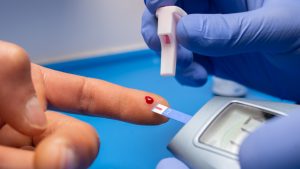Exercise is essential for maintaining health and well-being throughout life, and it’s never too early or too late to start reaping its benefits. In this article, we explore suitable exercise activities for various age groups, from children to older adults, highlighting how different types of exercise can promote health and fitness at every stage of life.
Exercise for Children and Adolescents
1. Outdoor Play and Sports
Children benefit greatly from active play and participation in sports. Activities like running, jumping, playing tag, and team sports not only promote physical fitness but also support social development and coordination.
2. Dance and Movement Classes
Dance classes or other structured movement activities can be enjoyable for children and adolescents. They help improve flexibility, balance, and cardiovascular health while encouraging creativity and self-expression.
3. Active Family Time
Incorporating family activities such as hiking, biking, or swimming encourages children to stay active while fostering family bonds and creating lifelong habits of physical activity.
Exercise for Adults
1. Aerobic Exercises
For adults, aerobic exercises like walking, jogging, cycling, or swimming are excellent for cardiovascular health. Aim for at least 150 minutes of moderate-intensity aerobic activity per week.
2. Strength Training
Incorporating strength training exercises, such as weightlifting or resistance band workouts, helps maintain muscle mass, bone density, and metabolic health as we age.
3. Group Fitness Classes
Joining group fitness classes, such as yoga, Pilates, or Zumba, provides social interaction while improving flexibility, balance, and overall fitness.
Exercise for Older Adults
1. Walking and Tai Chi
Walking is a low-impact exercise that can be adapted to individual fitness levels and mobility. Tai Chi, with its gentle movements and focus on balance, is excellent for improving flexibility and reducing the risk of falls.
2. Water-Based Activities
Swimming or water aerobics are ideal for older adults, as water provides resistance without stressing joints. These activities improve cardiovascular health and overall strength.
3. Chair Exercises
Chair exercises, including seated yoga or resistance band workouts, help older adults stay active while seated or holding onto a stable surface, promoting strength and flexibility.
Tips for Safe and Effective Exercise Across Age Groups
1. Consult with a Healthcare Professional
Before starting any new exercise program, especially for older adults or individuals with pre-existing health conditions, consult with a healthcare provider to ensure safety and suitability.
2. Start Slowly and Progress Gradually
Encourage gradual progression of exercise intensity and duration to prevent injury and allow the body to adapt to increased physical activity.
3. Stay Hydrated and Listen to Your Body
Drink water before, during, and after exercise, and pay attention to how your body responds. Adjust activities or seek medical advice if you experience discomfort or pain.
Embrace a Lifetime of Fitness!
Exercise is a cornerstone of health at every age, offering physical, mental, and social benefits. Whether you’re a child exploring the world through play, an adult maintaining fitness, or an older adult enjoying gentle movements, staying active is key to living a vibrant life.
E4 Helps you:
At E4, we’re dedicated to revolutionizing how people manage type 2 diabetes through our innovative E4 Alive program. Our team of specialists has joined forces to create a comprehensive solution aimed at empowering individuals to take charge of their health journey. With personalized support and resources tailored to each person’s unique needs, we make managing diabetes simpler and more effective than ever before.
E4 Alive offers a range of tools and resources to help you better understand and control your blood sugar levels. Our program provides personalized guidance to create a healthy eating plan and integrate regular physical activity into your daily routine. Plus, you’ll have access to a supportive community of individuals who understand your challenges and are there to offer encouragement and guidance every step of the way.
By joining E4 Alive, you can effectively manage your blood glucose levels, improve long-term glycemic control, reduce your risk of diabetes-related complications, and enhance your overall quality of life. It’s not just a program; it’s an opportunity to reclaim your health and vitality. Ready to start your journey to better health? Visit THIS PAGE to learn more about E4 Diabetes Solutions and the E4 Alive program.
To learn more about E4 Diabetes Solutions and the E4 Alive program, visit THIS PAGE.

Type 2 Diabetes: Is It Really Reversible?
A recent National Geographic article [link] explores how type 2 diabetes could be reversible with the right approaches. This condition, which affects millions of people worldwide, has long been considered a chronic and progressive disease. However, recent research challenges this perception and suggests that with lifestyle changes and the right approach, remission is possible. The

How Do GLP-1 Drugs Compare? A Breakdown of Ozempic, Mounjaro, and Trulicity
GLP-1 receptor agonists have revolutionized diabetes management, with drugs like Ozempic, Mounjaro, and Trulicity leading the market. But how do these medications compare in terms of effectiveness, side effects, and patient outcomes? Let’s explore their differences and what they mean for diabetes patients. Understanding GLP-1 Medications GLP-1 receptor agonists mimic a natural hormone that helps

Why Has Medicare Spending on Diabetes Medications Skyrocketed in 5 Years?
In the past five years, Medicare spending on diabetes medications has increased nearly fivefold, reaching $35.8 billion in 2023. This surge has been primarily driven by the growing use of GLP-1 drugs such as Ozempic, Mounjaro, and Trulicity. But what is behind this cost escalation, and how does it affect patients and the U.S. healthcare

The Gut Microbiota and Blood Sugar Control: A Hidden Connection
The human gut is home to trillions of bacteria that play a crucial role in digestion, immune function, and even metabolism. Recent research has revealed a fascinating link between the gut microbiota and blood sugar regulation, shedding light on how the balance of microbes in our intestines can influence diabetes risk and overall metabolic health.

The Dawn Phenomenon: Why Blood Sugar Rises While You Sleep
For many people with diabetes, waking up with high blood sugar levels can be frustrating—especially if they didn’t eat anything overnight. This early-morning spike in blood glucose is known as the Dawn Phenomenon, and it happens due to natural hormonal changes in the body. But why does it occur, and how can it be managed?

The Influence of Red Light on Blood: Can It Improve Diabetes?
Type 2 diabetes is a metabolic disease characterized by insulin resistance and elevated blood glucose levels. In the search for complementary alternatives to improve glycemic control, red light therapy has gained attention due to its potential to enhance circulation, reduce inflammation, and optimize cellular function. But what does science say about it? ✨ What is

